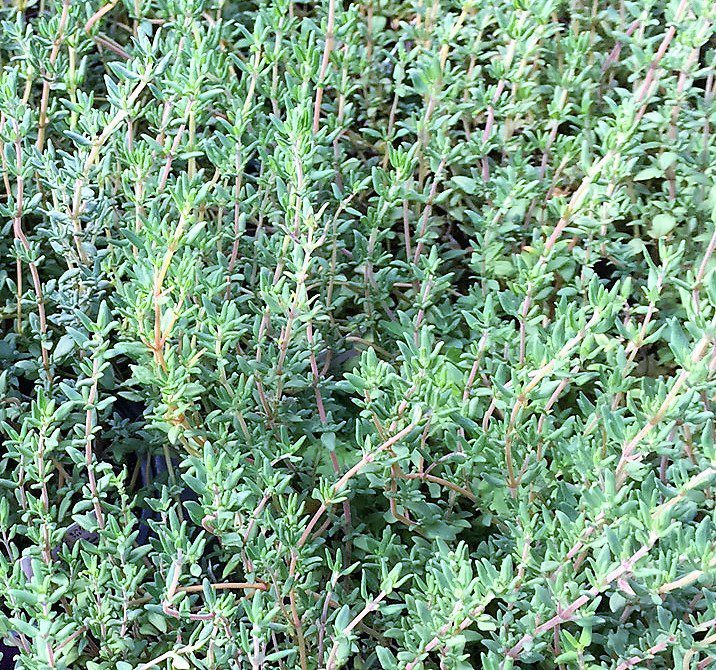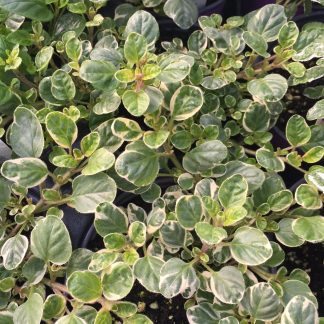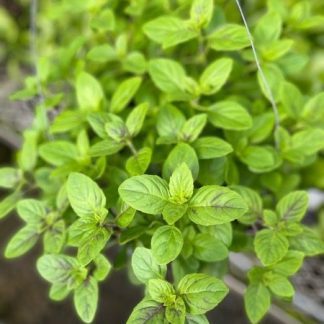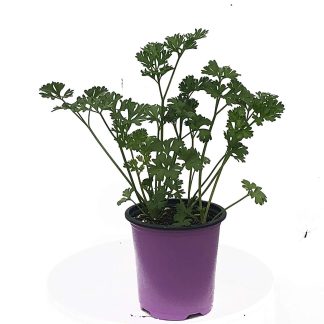Description
Winter Garden Thyme (Thymus vulgaris): A Cold-Hardy Essential for Flavor and Beauty
Winter Garden Thyme, a resilient form of Thymus vulgaris, stands out as a herb that offers unmatched versatility and endurance. With its earthy aroma, robust flavor, and year-round greenery, this perennial is perfect for gardeners who want herbs that survive through frost and still deliver fresh leaves for the kitchen. Beyond its culinary value, Winter Garden Thyme adds charm to landscapes with its dense growth and soft pink-to-lavender blooms in warmer months.
A Herb That Endures All Seasons
Winter Garden Thyme’s defining feature is its hardiness. Unlike more tender herbs, this thyme stays evergreen through cold months, allowing gardeners to harvest fresh sprigs even in late winter. It thrives in USDA zones 4 to 9, tolerating frost, wind, and drought once established. This durability makes it an excellent option for gardeners who face unpredictable weather or want low-maintenance perennials that return every year.
Distinct Flavor and Culinary Uses
The flavor of Winter Garden Thyme is earthy and slightly peppery, with hints of woodsy warmth that deepen when cooked. This makes it an essential herb for winter cooking. It pairs beautifully with hearty dishes such as:
- Soups and stews: Enhances slow-cooked broths, root vegetables, and lentils.
- Roasted meats and vegetables: Complements beef, poultry, carrots, and potatoes.
- Marinades and rubs: Adds depth to grilled meats and seasonal roasts.
- Herbal teas: Provides soothing, aromatic qualities, especially when paired with honey.
Its flavor remains strong even after drying, making it an excellent choice for preserving summer harvests to use in colder months.
Visual Appeal in the Garden
Winter Garden Thyme is as ornamental as it is useful. The plant forms low, bushy mounds of small, deep green leaves that maintain their color year-round. In late spring to early summer, it produces clusters of pink or lavender flowers that attract bees and butterflies, boosting pollination in nearby vegetables and fruits.
Its compact size—usually 6 to 12 inches tall—makes it ideal for edging pathways, filling in gaps between stones, or spilling attractively over the edges of raised beds and containers.
Growing Conditions and Care
One of the reasons Winter Garden Thyme is beloved by beginners and experienced gardeners is its adaptability. It thrives in conditions that many other herbs find challenging.
Sunlight: Full sun is ideal for the strongest flavor and compact growth. It can tolerate partial shade but may become leggy.
Soil: Prefers well-drained soil with moderate fertility. Sandy or rocky soils are ideal, and heavy clay should be amended with compost or grit.
Watering: Once established, thyme is drought tolerant. Water deeply but infrequently, allowing the soil to dry between waterings. Overwatering is a common cause of root rot.
Pruning: Regular light trimming encourages bushier growth and prevents woodiness. After flowering, cut back by one-third to maintain shape and vigor.
Cold Protection: In very harsh winters, mulch lightly around the base to shield roots from extreme freeze-thaw cycles, though the plant is naturally hardy.
Container and Border Uses
Winter Garden Thyme shines in both functional and decorative plantings. In containers, it partners beautifully with other Mediterranean herbs like rosemary and oregano, creating a portable kitchen garden. Its trailing habit softens the edges of pots and raised beds. Along borders, it provides year-round greenery and aromatic texture, blending seamlessly with perennials and ornamental grasses.
Companion Planting Benefits
This thyme is more than just a culinary herb; it’s also a valuable companion plant. Its strong scent deters certain pests, such as cabbage worms and whiteflies, while attracting beneficial pollinators. Planting it near cabbages, tomatoes, and strawberries can improve growth and reduce pest pressure.
Harvesting and Preserving
Harvest sprigs throughout the year, focusing on new growth for the best flavor. For drying, cut stems just before flowering when essential oil levels are highest. Hang small bundles upside down in a cool, airy space until fully dry, then store in airtight containers. Dried thyme keeps its flavor for up to a year, making it easy to stock your pantry for winter cooking.
Why Gardeners Love Winter Garden Thyme
This herb offers a perfect blend of practicality and charm. It provides fresh leaves when few other herbs are available, thrives in rugged conditions, and adds lasting greenery to the garden. Its flowers feed pollinators, its foliage repels pests, and its flavor transforms simple meals into comforting feasts. Whether grown in a large kitchen garden or a small patio pot, Winter Garden Thyme earns its place as a true year-round companion.
A Herb Worth Planting and Keeping
Winter Garden Thyme is not just another herb; it is an enduring staple that supports both culinary traditions and garden ecosystems. By planting this variety, we embrace a plant that thrives through challenges and rewards us with beauty, fragrance, and flavor every day of the year.
Would you like me to create similar full write-ups for other thyme varieties (like Golden Lemon Thyme or Silver Thyme) so they can form a complete thyme series for your blog?




